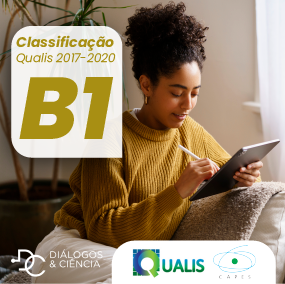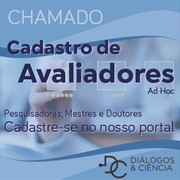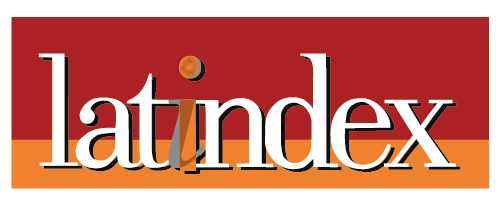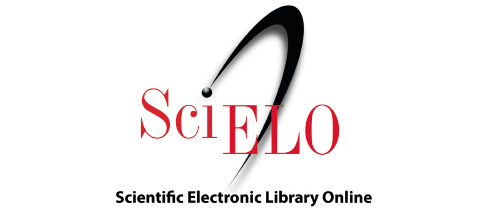CAVIDADE BUCAL: UMA ROTA DISSEMINADORA EM POTENCIAL PARA O COVID-19?
DOI:
https://doi.org/10.7447/1678-0493.2021v1n42p37-44Palavras-chave:
Covid-19, Cavidade oral, ManifestaçõesResumo
A doença Covid-19, causada por uma síndrome respiratória aguda grave, através do vírus SARS-CoV-2, surgiu em 2019 e rapidamente se espalhou pelo mundo inteiro, tornando-se uma pandemia. Os principais sintomas são: febre, dispneia, tosse seca e tem crescido os relatos de manifestações orais, como perda de paladar e presença de lesões. Com a infecção pelo vírus, o organismo se defende através das respostas imunes, secretando citocinas pró-inflamatórias, as quais se exacerbam e aumentam de número, gerando a tempestade de citocinas. Foi verificada a possível relação de a cavidade oral ser considerada uma via disseminadora do COVID-19 e sua relação com as manifestações orais. Uma busca bibliográfica foi realizada nas bases de dados PubMed e BVS (Biblioteca Virtual em Saúde), utilizando-se os descritores: “Covid-19”, “Sars-CoV-2”, “ACE2”, “cavidade oral” e “manifestações”. As ACE2 foram encontradas em células epiteliais da cavidade oral, tecidos gengivais, o que sugere que a cavidade oral pode ser uma via potencial de disseminação do vírus, e sua maior expressão foi percebida na língua, podendo representar um fator para alterações gustativas. As lesões orais foram percebidas no início da doença e progrediram com a evolução da infecção. Dessa maneira, os cirurgiões dentistas podem contribuir na detecção das manifestações orais do COVID-19, as quais são indicativos em potencial da infecção por coronavírus.
Descritores: Covid-19. Cavidade oral. Manifestações.
Referências
BRANDÃO, T. et al. Oral lesions in patients with SARS-CoV-2 infection: could the oral cavity be a target organ? Oral Medicine, v. 131, n. 2, p. 45-51. 2021. DOI: 10.1016/j.oooo.2020.07.014.
CARRERAS-PRESAS, M. et al. Oral vesiculobullous lesions associated with SARS-CoV-2 infection. Oral diseases, v. 3, p. 710-712. 2020. DOI: 10.1111/odi.13382.
GIACOMELLI, A.; PEZZATI, L.; CONTI, F.; BERNACCHIA, D.; SIANO, M.; ORENI, L.; RUSCONI, S.; GERVASONI,C.; RIDOLFO, A.; RIZZARDINI, G.; ANTINORI, S.; GALLI, M. Self-Reported Olfactory And Taste Disorders In Patients With Severe Acute Respiratory Coronavirus 2 Infection: A Cross-Sectional Study. Clinical Infectious Diseases, v.71, n.15, p. 889-890. 2020.
HUANG, N. et al. SARS-CoV-2 infection of the oral cavity and saliva. Nature Medicine, v. 27, p. 892-903.2021. DOI: 10.1038/s41591-021-01296-8.
LECHIEN, J. et al. Olfactory and gustatory dysfunctions as a clinical presentation of mildtomoderate forms of the coronavirus disease (COVID19): a multicenter European study. European Archives of Oto-Rhino-Laryngology, v.277, n. 8, p. 2251-2261. 2020. https://doi.org/10.1007/s00405-020-05965-1.
LETKO, M; MARZI, A; MUNSTER , V. Functional Assessment Of Cell Entry And Receptor Usage For Sars-Cov-2 And Other Lineage B Betacoronaviruses. Nature Microbiology, v. 5, n. 4, p. 562-569. 2020. DOI: 10.1038/s41564-020-0688-y.
LU, R. et al. Genomic characterisation and epidemiology of 2019 novel navirus: implications for virus origins and receptor binding. The Lancet, v. 395, p. 565-574. 2020. DOI: 10.1016/s0140-6736(20)30251-8. OPAS BRASIL. Disponível em: https://www.paho.org/bra/index.php?option=com_content&view=articl e&id=6101:covid19&Itemid=875. Acesso em: 11 de jul. 2021.
ORTEGA, I.; ORTEGA, D. SARS-CoV-2 impact on oral health: a general view. Boletín Médico del Hospital Infantil de México, v. 78, n. 2, p. 91-94. 2021. DOI: 10.24875/BMHIM.20000192.
PASCOAL, D.; CARVALHO, A.; MATA, L.; LOPES, T.; LOPES, L.; CRUZ, C. Síndrome Respiratória Aguda: uma resposta imunológica exacerbada ao COVID19. Brazilian Journal of Health Review, v. 3, n. 2, p. 2978 –2994. 2020. DOI:10.34119/bjhrv3n2-138.
SANABRIA, E. et al. Manifestaciones orales y maxilofaciales asociadas a la COVID-19: Revisión de la literatura. Acta Odontológica Colombiana, v. 10, p. 60-80. 2020.
SPINATO, G; FABBRIS, C; POLESEL, J. Alterations In Smell Or Taste In Mildly Symptomatic Outpatients With Sars-Cov-2 Infection. Jama, v. 393, n. 20, p. 2089-2090. 2020. Doi:10.1001/Jama.2020.6771.
TUÑAS, I.; SILVA, E.; SANTIAGO, S.; MAIA, K.; SILVA-JÚNIOR, G. Coronavirus disease 2019 (COVID-19): A preventive approach to Dentistry. Brazilian Journal of Dentistry, v. 77, e1766. 2020. DOI: http://dx.doi. org/10.18363/rbo.v77.2020.e1766.
VAIRA, L. et al. Objective evaluation of anosmia and ageusia in COVID-19 patients: Single-center experience on 72 cases. Head & Neck, v. 42, p. 1252-1258. 2020. DOI: 10.1002/hed.26204.
WU, Z; GOOGAN, MC, J. Characteristics Of And Important Lessons From The Coronavirus Disease 2019 (Covid-19) Outbreak In China: Summary Of A Report Of 72 314 Cases From The Chinese Center For Disease Control And Prevention. Jama, v. 323, n. 13, p. 1239-1242. 2020. DOI: 10.1001/jama.2020.2648.
XU, H.; ZHONG, L.; DENG, J.; PENG, J.; DAN, H.; ZENG, X.; LI, T.; CHEN, Q. High expression of ACE2 receptor of 2019-Ncov on the epithelial cells of oral mucosa. International Journal Of Oral Science, v. 12, n. 8. 2020.
YAN, C.; FARAJI, F.; PRAJAPATI, D.; BOONE, C.; DECONDE, A. Association of Chemosensory Dysfunction and Covid-19 in Patients Presenting with Influenza-like Symptoms. International Forum of Allergy & Rhinology, v. 10, n. 7, p. 806-813. 2020. Doi: 10.1111/alr.22579.
ZHANG, H.; PENNINGER, J.; LI, Y.; ZHONG, N.; SLUTSKY, A. Angiotensin-converting enzyme 2 (ACE2) as a SARS-CoV-2 receptor: molecular mechanisms and potential therapeutic target. Intensive Care Medicine, v. 46, n. 4, p. 586-590. 2020. DOI: 10.1007/s00134-020-05985-9.
ZHAO, Y. et al. Single-cell RNA expression profiling of ACE2, the putative receptor of Wuhan 2019-nCov. 2020. Disponível em: https://www.biorxiv.org/content/10.1101/ 2020.01.26.919985v1.
ZOU, X.; CHEN, K.; ZOU, J.; HAN, P.; HAO, J.; HAN, Z. Zeguang Han.Single-cell RNA-seq data analysis on the receptor ACE2 expression reveals the potential risk of different human organs vulnerable to 2019- nCoV infection. Frontiers Medicine, v. 14, n. 2, p. 185-192. 2020. DOI: 10.1007/s11684-020-0754-0.
Downloads
Publicado
Edição
Seção
Licença
Copyright (c) 2021 Diálogos & Ciência

Este trabalho está licenciado sob uma licença Creative Commons Attribution-NonCommercial 4.0 International License.











